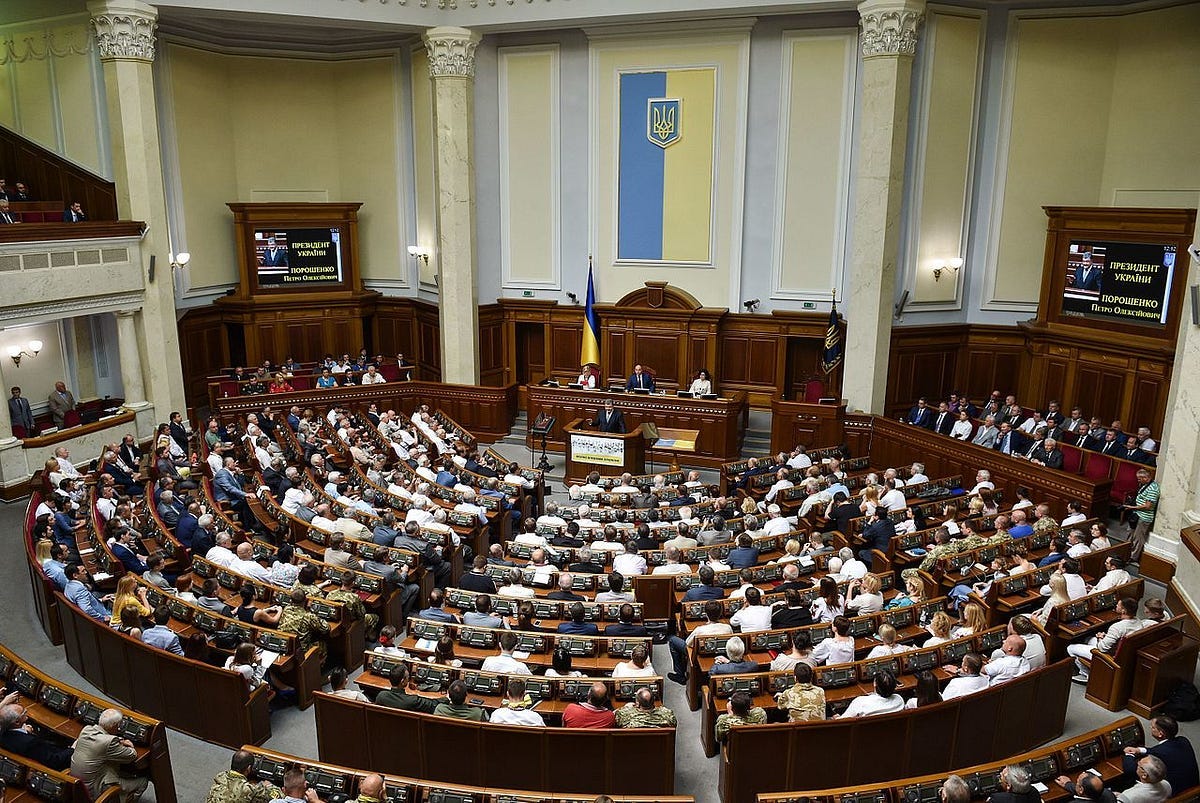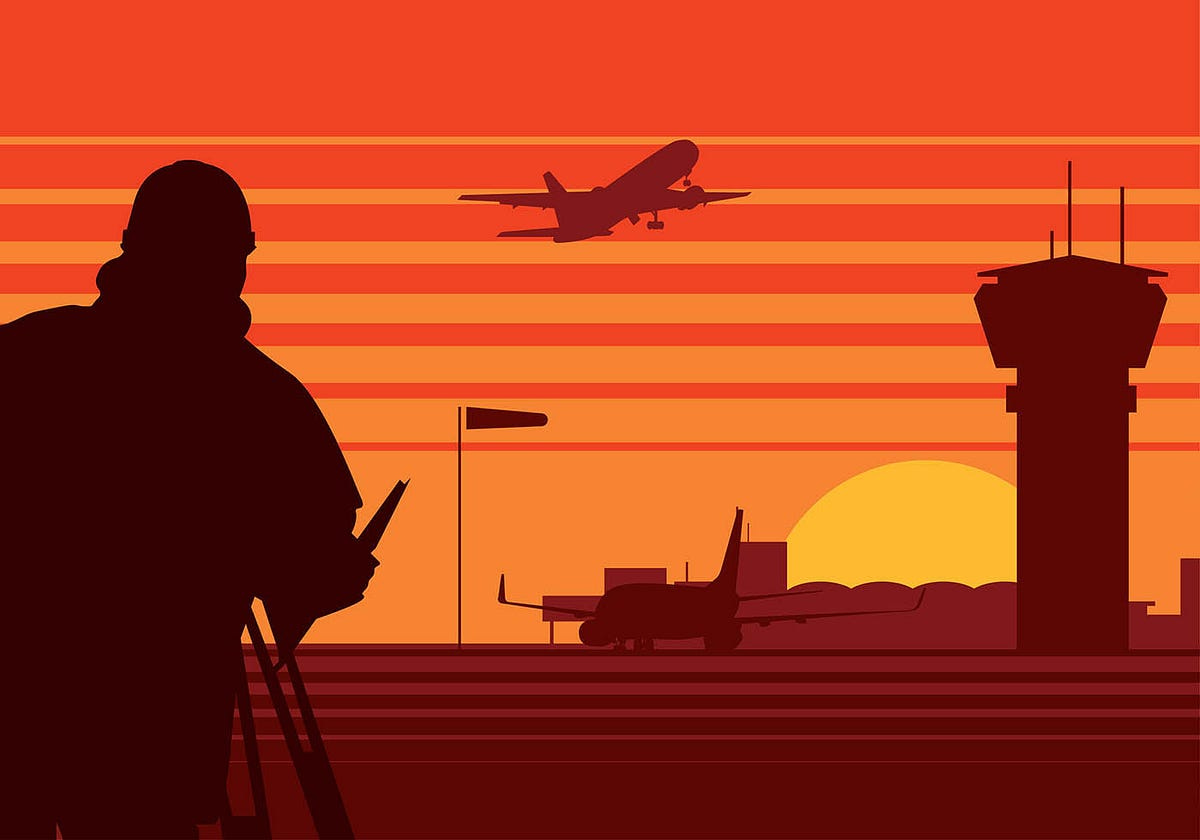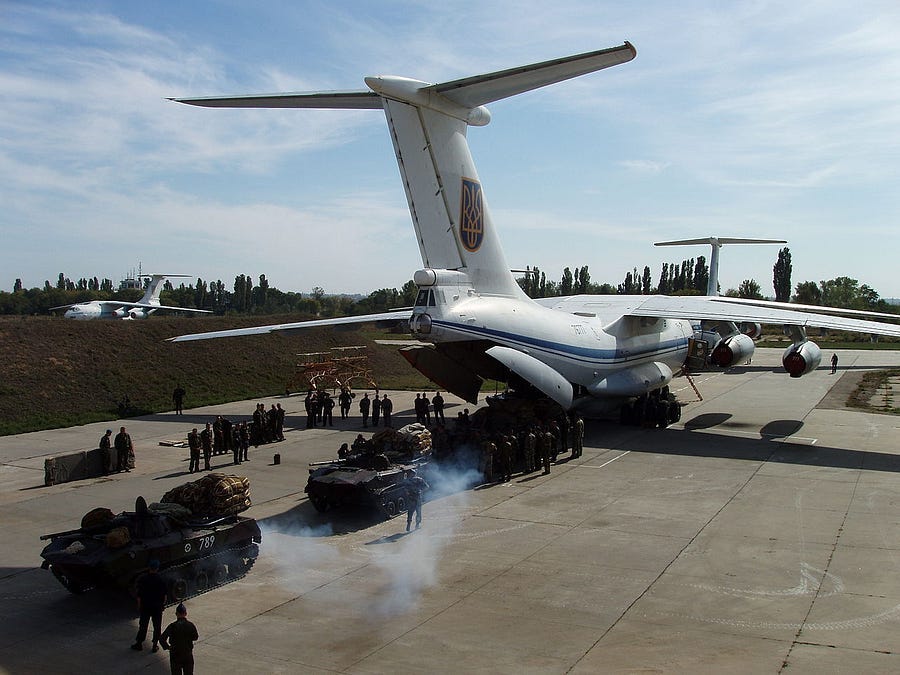Hostomel Airport: The 36 hours that changed Ukraine
The pivotal turning point in Russia’s invasion
Russian President Vladimir Putin had a plan.
In that plan, he will roll over Ukraine, just like how he rolled over Crimea. A huge opening move, followed by a massive movement of forces and before the world could make heads or tails of what is happening, he will take control of the ground, dig in and dare them to evict his troops.
Since he could always resort to the nuclear threat, he clearly understood that once he stepped foot inside someone else’s house, there wasn’t much the world could do. It always worked in the past and there is no reason to believe that it wouldn’t work in Ukraine.
It almost worked. A motley group of 200 conscripts and barely trained back of the line troops made mince meat of the Russian army’s grandiose plan for swift victory.
The First Day of War Decides the Future
CIA Director Bill Burns told American lawmakers that President Putin wanted to seize “Kyiv within the first two days of the campaign”.
The importance of the initial phase in warfare can never be overstated; it represents a critical window for establishing momentum, employing shock and awe tactics, seizing the initiative, gathering vital intelligence, and shaping public and political perceptions. These early actions, decisions, and successes fundamentally set the course and outcome of any military campaign.
“The first 24 hours of the invasion will be decisive.” — General H. Norman Schwarzkopf, who commanded coalition forces during the Gulf War in 1991, emphasized the critical nature of the initial stages of an invasion.
Shock →Paralyze → Win. A forceful and strategic start, that aims to achieve victory before the enemy can mobilize his response.
Kremlin believed that the capture of Kyiv would lead to the collapse of President Volodymyr Zelensky government, inducing disarray within the Ukrainian military and leaving the population in a state of shock. Their strategy aimed to secure this rapid outcome before the Western world could mount a response, intending to capitalize on the disorientation and shock to swiftly achieve their objectives.
The Russian plan to disable the Ukrainian government ran straight through the Hostomel airport runway. It was a strategic choice, because it ticked off multiple options for the Russian army.
Located just 6 miles to the north Kyiv, the airport was along the route of the mechanized armored columns ordered to march towards the Ukrainian capital from Belarus. Since the runway was capable of handling large cargo aircrafts, it had the width to host Russia’s multi-purpose, fixed-wing, four-engine strategic airlifter Ilyushin (IL-76). Russian airborne troops use IL-76 to rapidly deploy their troops behind the enemy lines.
The Hostomel airport was supposed to function as the airbridge facilitating the swift movement of Russia’s elite troops, weaponry, and vehicles. The initial objective involved securing the airport, establishing an efficient airbridge, and continuously deploying troops. The idea was to infiltrate Kyiv amidst chaos, locate the Ukrainian leadership if present, or alternatively, assert Russian presence by hoisting the flag at the Verkhovna Rada building, the seat of the Ukrainian parliament.

With the Russian armored columns ordered to march towards Kyiv crossing the border by 4.00 am in the morning of February 24th, the Russian forces fighting at the Hostomel airport were probably aware that reinforcements were on their way.
On that morning, Ukraine had no idea about Russia’s intentions. The entire country was still struggling to answer the — will they or wont they — question after Russia massed its troops along the Ukrainian border.
Former Ukraine President, Petro Poroshenko said “nobody knows, including Putin” whether a Russian invasion will actually happen in January 2022.
As a result, the armed forces of Ukraine were neither prepared nor were they equipped to defend the capital. On 24th February, the day of the attack, the “72nd mechanized brigade, which was charged with Kyiv’s defense, was still on the move from its garrison south of the city. While many Ukrainian units began moving the day prior, they had not yet reached their planned defensive positions when the airmobile strike force arrived at Hostomel”.
When Russia’s first airborne units landed at the Hostomel airport, it had only a small contingent of around 200 soldiers from the Ukrainian National Guard’s 4th Rapid Reaction Brigade to counter. This group was notably ill-equipped for combat, consisting mainly of conscripts and support personnel rather than frontline soldiers. Unaware of Russia’s intent to target Hostomel airport, they were unprepared for such an assault.
The Russian armed forces first struck the Hostomel airport with Kalibr cruise missiles, potentially targeting air-defense systems and troop concentration deployed to protect the airport. If the target was the air-defenses, then it most probably did not work because Ukraine repeatedly brought down Russia’s helicopters on that day.
At 9.30 am, Russian helicopters flying from Belarus crossed into the Ukrainian border. They flew without any resistance until they got closer to the the Kyiv hydroelectric powerplant just north of Kyiv. Ukrainian air defense shot down one Ka-52 attack helicopter and a Mi-24, as they tried to cross the river.
The Ukrainian forces strategically positioned large trucks and other vehicles on the runway, aiming to impede the Russians from gaining control of the airstrip.
The defenders at Hostomel airport managed to bring down the renowned and highly capable Ka-52 helicopter used by the Russians. By a stroke of luck, the helicopter exploded, scattering its wreckage across the runway. Despite the Ukrainian defenders’ success in downing several attack helicopters, the Russians still succeeded in deploying over 300 soldiers into the airport.
Facing overwhelming numbers and lacking adequate air cover, the Ukrainian National Guard troops gradually retreated from the airport. By 1 PM, the Russians successfully seized control of the airport. However, their position was tenuous. With the helicopters having returned to Belarus, the Russian soldiers holding ground at the Hostomel airport, devoid of support equipment, found themselves defending the airport with minimal air support.
Sustaining the operation of the airbridge relied on the successful coordination of two vital components. The initial reinforcements were scheduled to arrive by air, utilizing the substantial Il-76 transport aircraft. Simultaneously, the secondary wave of reinforcements was intended to reach the airport by ground.

But neither options came to fruition.
The valiant defense put up by the minimally-trained Ukrainian National Guard compelled the attack helicopters to retreat, which left the initial batch of Russian soldiers in a similar position — defending without much outside support. Ukraine seized this opportunity, opting to strike back and launch a counterattack against the Russians, who were now attempting to secure the airport.
Just before sundown that same day, the Ukrainian counterattack kicked off with artillery strikes and Su-24 bombers, aiming to weaken the Russian defenses. By nightfall, the Ukrainian army had seized control of the airport. However, they withdrew when Russian ground forces arrived at the airport the next morning, on February 25th.
The failure to fully capture the airport threw a wrench in the Russian plans. The strategy was indeed a good one, but, as usual, the Russian army overplayed its hand and underestimated Ukraine. Their sheer arrogance prevented them from devising a backup plan. They were clueless about what to do if the airbridge failed to materialize.
As the Russian ground forces approached the outskirts of Kyiv, Ukraine had ample time to fortify its defenses. President Zelensky made a crucial decision not to flee. Instead, he urged the residents of Kyiv to prepare Molotov cocktails and stand ready for defense. “Residents were warned to avoid windows and balconies. 18,000 guns were distributed amongst citizens during the first day of the battle, while the Ukrainian Territorial Defense Forces, normally kept in reserve, were activated”.
The Russian ground troops found themselves halted at the edges of Kyiv. Ukraine withstood the initial attack, standing firm as the government adamantly refused to flee. This stance conveyed a clear message to the citizens that they were expected to resist. The Ukrainian military realized that the command and control remained intact, recognizing that the entire nation had united in support behind them.
Despite the initial stalling of Russian troops at the outskirts of Kyiv, Russia persisted in its efforts. They attempted to reinforce their presence by sending additional troops towards the city. You might recall the convoy of tanks that became stranded just 30 miles from Kyiv, with images spreading across the globe. Undeterred, Russia orchestrated a massive tank parade, targeting Kyiv in an attempt to bombard the city into submission.
Ukraine was ready and took strategic measures. They destroyed bridges and deployed soldiers equipped with anti-tank weapons to thwart the advancement of the tanks, causing deliberate traffic congestion. As a result, the grand Russian tank parade never reached Kyiv, certainly not on the scale Putin intended to sow chaos within the city and certainly not on time to achieve Putin’s intended swift victory.
Even if they had succeeded, the outcome might not have significantly varied, as the primary target of their assault on Kyiv — the unity of the Ukrainian leadership — remained intact. When leadership unites and stands firm, it becomes exceedingly challenging to defeat them.
In two days, the Russian plan to defeat Kyiv was over.
They kept trying to enter Kyiv, but the sheer size of the Ukrainian lands and the lack of preparation to meet the needs of the soldiers over weeks, squeezed the Russian army. As days turned into weeks, with all the momentum lost, the supply chain issues faced by the Russian army severely cramped their ability. By the end of march, the Russian army realized they will not be able to enter Kyiv and quietly withdrew.
That was the day the world, probably for the first time realized, Ukraine can punch back at the Russian army and come out on top. Thanks to the Ukrainian National Guard Troops, who probably never had any idea of what they have done for their country by the time the withdrew from the Hostomel airport on the first day of the war.
Together, their little bravery, cut Putin’s army to size and made Ukrainians believe that they can prevail.




